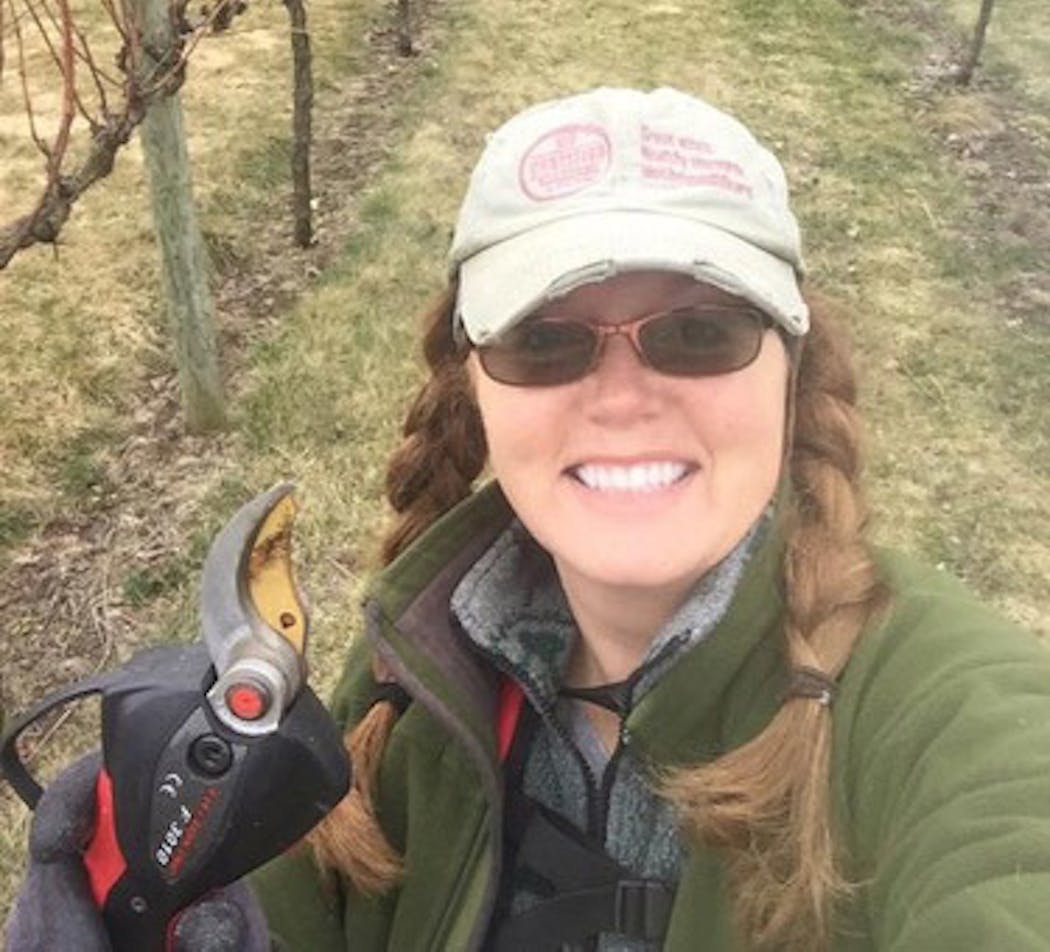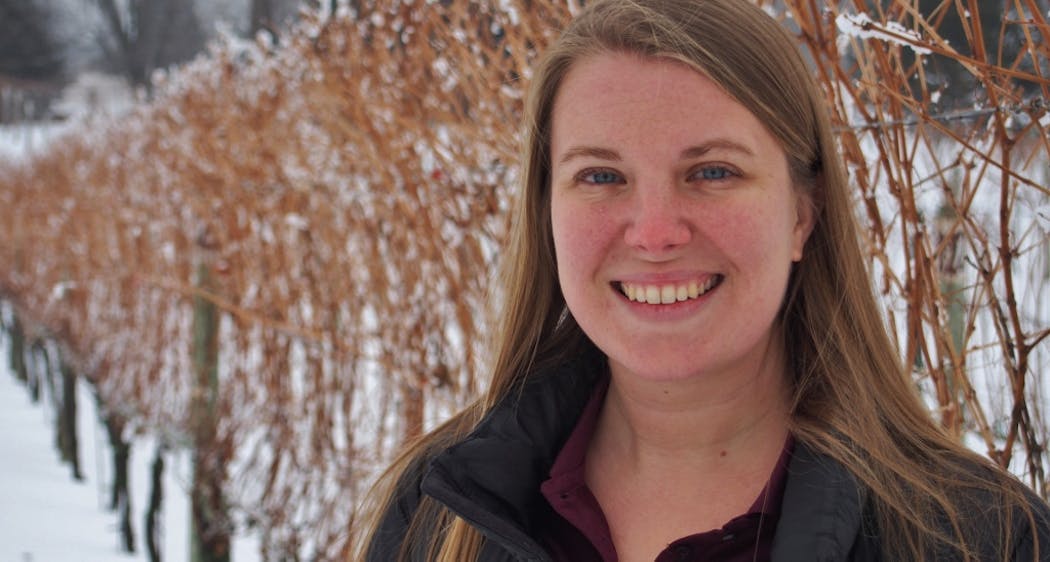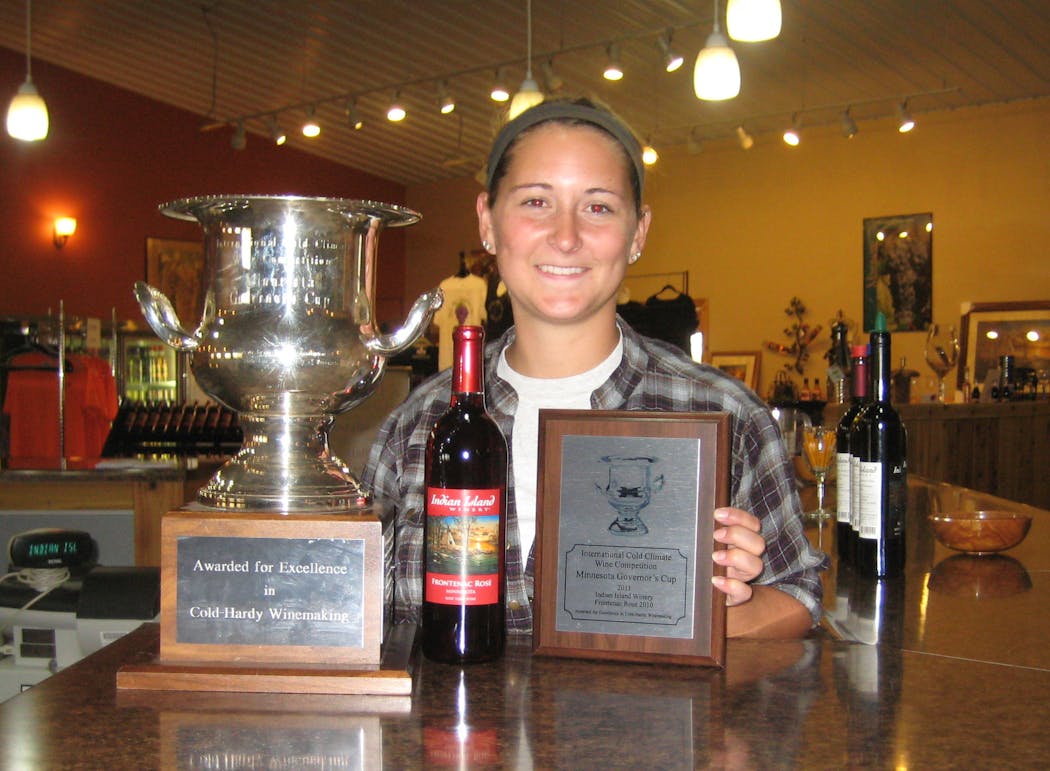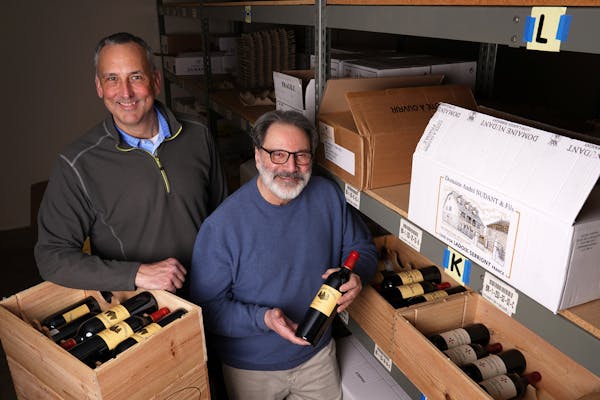As with most other businesses, wine has been predominantly a man's world. And as with most other businesses, that is changing, including in Minnesota.
Pioneers such as winemaker Nan Bailly and oenologist Anna Katharine Mansfield have paved the way for a next generation of women ready, willing and more than able to carve out their own paths. Along with studying and growing grapes and making wine, they are embracing leadership roles in the industry.
A shift in focus
Although people have been making wine in Minnesota for decades, Lisa Smiley in a sense got in on the ground floor. She had studied agriculture at the University of Minnesota but then "quickly realized I didn't want to do corn and beans … [and] started to realize we could grow good grapes here 15 years ago," after the university had released several promising grapes to go with the French-American hybrids suited to the Upper Midwest.
She switched to agronomy and wrote her master's thesis at Iowa State University on cold-climate grapes, staying there to work as a viticultural technician. Smiley also planted what became the 3-acre Cannon Valley Vineyard near Cannon Falls, Minn.
There, unlike many of her peers, Smiley said she "concentrated on quality over quantity. I'm probably too meticulous," she added with a chuckle. She also relishes the struggles and strife of growing grapes in our daunting conditions, with its various diseases and the occasional polar vortex.
That whole meticulous thing means that she has learned a lot along the way. The Marquette grape didn't do well on her hilltop vineyard, so she now has only white grapes. Even within that context, the grapes prove quite different, she said. "Brianna [the grape] is like that middle child, saying, 'You go worry about everybody else, I'm just fine.' It's so easy; everything falls into place. La Crescent's really challenging, but I really enjoy the challenge. Once I realized I needed to quit fighting it, it's made a huge difference."
Smiley served as chair of the American Society for Enology and Viticulture, Eastern Section. In recent years she has been executive director of the Southern Minnesota Winegrower Alliance, which sponsors the Cannon Falls Wine and Art Festival, which draws upward of 5,000 people every year. In essence she and her organization saved the festival (July 18-19 this year), which requires an association to enable the sale of wines by the bottle.
Teacher in the vineyard
Smiley meets regularly with Annie Klodd, an assistant extension professor for fruit and vegetable production at the University of Minnesota. Klodd says she has "the best job in the world." Proof positive: She loves pruning grapevines in the snow, "although it's a little nicer if it's more like 30 degrees than zero."
Most of her gig, however, is basically teaching and troubleshooting, visiting vineyards and helping growers deal with problems and helping "make sure we're growing as many high-quality Minnesota grapes as we can." That could involve coping with many and varied types of rot, or recommending that growers do something that doesn't come naturally to any farmer: thinning their crop during growing season so that the remaining grapes will be more concentrated.
Another prevalent topic is canopy management. Cold-climate vines tend to produce prolific leafing, and the grape clusters might not get the sun and free-flowing air they need without a thinning of those leaves.
Klodd is encouraged by what she has seen in recent years from growers. "When we teach pruning or canopy management, we've been getting up to 60 growers, and people will stand around and have conversations afterward. … One thing that I really love about the Midwestern wine industry is that there's a lot of cooperation here. People are even sharing equipment out in western Minnesota."
One factor that should make Klodd's job easier is the emergence of the white Itasca grape, a 2016 U release that is just now establishing itself around the state.
"It grows so symmetrically," she said, "and if growing on vertical shoot positioning, it's just beautiful. And last winter [2018-19] when we had the polar vortex, Itasca seemed to do a lot better [than other grapes]. It's definitely on the hardier side."
All in the family
Another big booster of the Itasca grape is Angie Netzke, who actually has been bottling the variety at her Indian Island Winery the last two vintages. "I want to compare it to a sauvignon blanc," she said. "I think it has that potential."
Netzke, to paraphrase Shakespeare, was "to the vineyard born." Her father, Ray Winter, founded Winterhaven Vineyard and Nursery near Janesville, Minn., in 2000. But it wasn't until Angie was 16 that her career course crystallized.
"My junior year of high school, we were sitting down one night for supper and talking about my future, starting to look for colleges," she said. "I brought up that I wasn't really sure what I wanted to do, and my dad was like, 'If you want to be a winemaker, we could start a winery.' I always loved being in the vineyard, learning about grapes, and I also was really good at math and chemistry, so. … "
So she studied food and science at the University of Wisconsin-River Falls, harvested grapes with Peter Hemstad at Saint Croix Vineyards in Stillwater, worked with Hemstad's U cohorts Anna Mansfield and Nick Smith and then interned at a large winery in New York's Finger Lakes region.
By the time she got back to Waseca County, the newly minted Indian Island Winery was ready for its first harvest, with Angie's brother Tom as vineyard manager. The Winters brought in Mark Wedge as consultant for two years "to make sure I didn't make any big mistakes," she said, and it has been a hectic learning process ever since.
"Starting out with very basic knowledge of wine," Netzke said, "I did everything bare minimum, making sure I had quality grapes and applied the right yeasts. I've since learned about different tannins and different fining agents and a lot of things I could do along to way to make the wines more complex and just make really good wine."
Mission accomplished, as Indian Island has quickly become one of the state's better wineries. And while she's pumped about Itasca's future, Netzke said her favorite grape is a red one, St. Croix. "It gives me a good challenge from year to year."
Today, it's much less of a challenge for women such as Netzke, Klodd and Smiley to make their mark in the growing Minnesota wine world.
Bill Ward writes at decant-this.com. Follow him on Twitter: @billward4.




